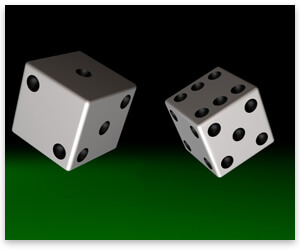- Last Updated
- Posted by
- Anxiety and Phobias, CBT, Evidence-Based Practice, Problem-Solving
Advances in Cognitive Therapy
Copyright (c) Donald Robertson, 2010. All rights reserved.
Thus conscience does make cowards of us all;
And thus the native hue of resolution
Is sicklied o'er with the pale cast of thought;
And enterprises of great pith and moment,
With this regard, their currents turn awry,
And lose the name of action. (Hamlet)
So said Hamlet, in Shakespeare's play, whose quest for certain proof regarding his father's murder drove him into depression, anguish, and interminable procrastination, until his hand was eventually forced by the ultimate “deadline” – he was poisoned and took decisive action just before he died. Hamlet's plight resembles that of the typical modern psychotherapy patient whose irrational (“neurotic”) demands were well-understood by Albert Ellis, the founder of Rational-Emotive Behaviour Therapy (REBT). Ellis identified one of the most common dysfunctional beliefs as “There is invariably a right, precise, and perfect solution to human problems and it is catastrophic if this perfect solution is not found.” (Reason and Emotion in Psychotherapy, 1962).
In recent decades, there has been increasing interest in the notion that “intolerance of uncertainty” may play an important causal role in the development of pathological worry. Attitudes of intolerance to uncertainty have consistently been found to correlate with the presence of worry. Worry is common to many forms of anxiety and depression, but particularly central to the diagnosis of Generalised Anxiety Disorder (GAD). A number of studies have produced mounting evidence for the importance of intolerance of uncertainty as a trait linked to GAD and other problems. For example, paradoxically, researchers have found that some chronic worriers actually prefer certainty about a negative outcome happening to uncertainty. Perhaps once these individuals know something bad is going to happen they feel able to resign themselves to planning how to cope, whereas uncertainty keeps them on edge. Moreover, there is some evidence of causation as intolerance of uncertainty has been found to chronologically precede the development of worry as well as correlating with it.
Traditional cognitive therapy for anxiety has struggled to treat these cases successfully. Cognitive therapy for GAD originally emphasised re-evaluating the probability of a feared outcome, which chronic worriers tend to find difficult and unconvincing. Whatever the estimated probability of danger the inescapable element of uncertainty will often be sufficient to maintain an ongoing process of worry because it continues to trigger “What if?” questions about hypothetical catastrophes, which may become distorted over time. The psychologist Michel Dugas has been especially responsible for promoting this concept of “intolerance of uncertainty” within CBT, although it has now been assimilated by Aaron Beck into his cognitive model and treatment of GAD. Treatment outcome studies have provided evidence that Dugas’ approach, based on acceptance of uncertainty, is more effective than traditional CBT for generalised anxiety, with 77% of chronic worriers being significantly better at the end of treatment.
Dugas' basic “intolerance of uncertainty” model is as follows,
Uncertainty
-> “What if?” questions
-> Worry
-> Anxiety
-> Demoralisation / Exhaustion
A situation which is problematic and characterised by uncertainty triggers “What if?” questions, which lead to catastrophic predictions about uncertain future events, and evolve into a process of worry, focused on uncertain future threats, and cumulative anxiety. Questions tend to maintain attention, sucking you in further, and “What if?” questions tend to involve negative predictions about the future, creating a state of prolonged mental absorption in different negative possibilities. This tends to be linked together as abstract verbal thoughts in worry, almost like a kind of negative self-hypnosis. The chain reaction begins with our response to uncertain threats, however, and it’s at this point, perhaps, that we can nip it in the bud before “What if?” thinking develops into pathological worry. Otherwise, the “What if?” question mark is like a little fishing hook that keeps our attention snagged.
Dugas describes intolerance for uncertainty, metaphorically, as a kind of allergy. Some people are just more “allergic” to uncertain situations than others and react with more worry and anxiety. People who can’t tolerate uncertainty typically “lose the name of action”, like Shakespeare’s Hamlet, and tend to procrastinate and avoid attempting to solve their problems. They hold out for certainty, conclusive evidence, and a “perfect solution” and are unwilling to adopt an experimental, trial and error, approach by testing out imperfect solutions until they find something that works. Some things are simply unknowable and some uncertainty is inescapable in life. Refusing to accept that fact keeps worry going pointlessly and fuels anxiety.
Reduction of Uncertainty
People who are intolerant of uncertainty, feel like they “must” overcome it, and tend to try compulsively to reduce uncertainty in their lives. In particular they may seek reassurance from other people, think about things repeatedly, or try to find information from sources like the internet. However, this quest for certainty seldom leads to satisfaction and people who suffer from chronic worry show a marked tendency to waste considerable time and energy in futile and repetitive attempts to find a “perfection solution” where none can be found. The search for certainty also tends to lead to procrastination and avoidance because taking action might involve risk and uncertain outcomes, and intolerance of uncertainty is associated with being risk averse. Increasing everyday exposure to “uncertainty”, or “uncertainty inoculation”, involves systematic “behavioural experiments”. These experiments require decreasing or eliminating one's attempts to reduce uncertainty, like reassurance-seeking, repeated checking, over-preparing, and excessive information searches.
Treatment
The alternative to compulsive certainty-seeking and intolerance of uncertainty is, of course, acceptance of uncertainty and a commitment to taking action, where necessary, in the face of uncertainty. Dugas’ treatment protocol for GAD consists of five key components,
- Worry awareness training involves keeping a daily record of worry topics in order to spot when they arise and what the main themes are
- Coping with uncertainty by reducing attempts to reduce uncertainty and carrying out behavioural experiments where uncertainty is deliberately embraced during prescribed activities
- Challenging positive beliefs about worry, e.g., that it’s positive character trait, aids in problem-solving, it’s motivating, protects you from negative feelings, or prevents negative events.
- Problem-solving training, especially developing a positive and confident attitude toward problems, seeing them as challenges rather than threats, but also developing specific planning skills
- Imaginal exposure to core fears, which reverses mental avoidance by asking the client to repeatedly visualise the feared catastrophic outcome and accept their feelings until they reduce
Traditional cognitive therapy is adapted to evaluate the evidence for and against beliefs that certainty can be achieved or a perfect solution found. The client is asked to carefully reconsider their reasons for believing that uncertainty about specific problems can be reduced or eliminated, that living with uncertainty is intolerable, or that one has sufficient control over future events to achieve a perfect solution to certain problems. According to psychologist Robert Leahy, author of The Worry Cure, challenging positive beliefs about worry may involve evaluating the pros and cons of worry about specific matters in detail to identify the difference between helpful and unhelpful instances of worry. This will often lead to the realisation that some problems are hypothetical, distant, uncontrollable, or unlikely, and not worth worrying about. Others are more imminent and concrete and may demand a solution, although worrying is usually less helpful than systematic problem-solving.
Problem-Solving / Imaginal Exposure
Hence, Dugas and his colleagues ask clients to distinguish between worries about current problems and those related to hypothetical situations, i.e., problems that are actually solvable in practice and ones that are not. Solvable problems are tackled using a version of traditional problem-solving therapy (PST), which involves cultivating a positive and confident attitude or “orientation” toward problems, getting in the right mind-set to start working on solutions. This is followed by the four typical steps,
- Definition of problems and goals
- Brainstorming alternative solutions
- Evaluation of consequences
- Action planning and solution implementation
Problem-solving, which goes beyond the “action planning” stage, to solution implementation, will inevitably require that worriers reverse their procrastination and avoidance, and usually entails accepting, and acting despite, some degree of uncertainty and risk.
Problems which are not suitable for practical problem-solving are addressed using a version of imaginal exposure therapy, in which the worst-case scenario is repeatedly visualised in concrete terms for prolonged periods, of around 30 minutes, until the anxiety naturally abates due to the process known as “classical extinction” or “habituation”. This is a bit like saying that by facing your fears repeatedly, for long enough, without distractions, you will tend to grow bored with them and get used to the feelings until they wear off and diminish. Accepting anxiety as harmless, temporary, and natural, seems to aid the process of extinction, whereas being ashamed of feeling anxious or trying to suppress your emotions and battle with them tends to maintain the problem and prevents the natural process of overcoming fears from following its normal course.
Suggested Reading
D'Zurilla, T. J., & Nezu, A. M. (2007). Problem-Solving Therapy: A Positive Approach to Clinical Intervention. New York: Springer Publishing.
Koerner, N., & Dugas, M. J. (2006). A Cognitive Model of Generalized Anxiety Disorder: The Role of Intolerance of Uncertainty. In G. C. Davey, & A. Wells (Eds.), Worry and its Disordres: Theory, Assessment and Treatment. Chichester: Wiley.
Nezu, A. M., Nezu, C. M., & D'Zurilla, T. J. (2007). Solving Life's Problems: A 5-Step Guide to Enhanced Well-Being. New York: Springer.
Robichaud, M., & Dugas, M. J. (2006). A Cognitive-Behavioral Treatment Targeting Intolerance of Uncertainty. In G. C. Davey, & A. Wells (Eds.), Worry and its Disorders: Theory, Assessment and Treatment. Chichester: Wiley.



